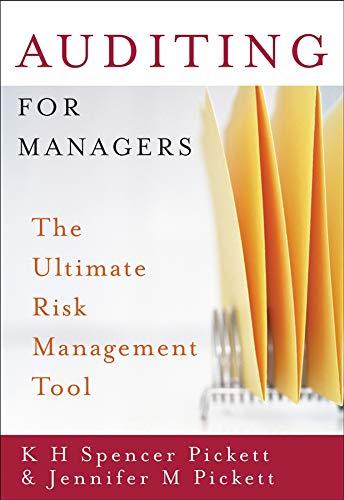Question
You are working as a consultant for a local landscape supply company. One of the possibilities that has consistently come up in conversation with the
You are working as a consultant for a local landscape supply company. One of the possibilities that has consistently come up in conversation with the owners is making your own mulch instead of continuing to buy mulch in bulk from the distributer. As part of your presentation, you have been asked to do the research and make a recommendation to the company as to whether or not this course of action is financially prudent. The pertinent data is listed below. What should they do? What other information do you need in order to help this company?
Currently purchase mulch from a wholesaler for $17/yard.
We sell mulch for $35/yard with a $30 delivery fee.
Mulch has a shelf life of one year on our property.
The chipper equipment is priced at $115,000 for a new model, $85,000 for a used model. The used model is 3 years old. This type of equipment generally has a 20 year useful life. Delivery, set-up on-site, and training is included. Our current mechanics can perform the necessary maintenance and repair on either model.
Producing the mulch will cost approximately $10 per yard for the fuel to run the chipper, the colorant, the labor for the machine, and the raw wood.
The town will provide some of the wood for the process at no cost from the brush collected from homeowners throughout the summer.
In addition to the cost of the equipment, there will be about $10,000 in fixed costs associated with starting this project. Once the equipment is purchased and in-place, the company does not expect any fixed costs above and beyond those associated with the current operations.
We have had issues in the past few years where our supplier of mulch did not have any available when we needed it for our customers. They have increased their prices each year, and driving and waiting at their pick-up location occupies our trucks and drivers.
We currently purchase and sell 3,700 yards of mulch a year.
We can purchase an add-on auto-bagger in the future for $30,000 and sell bagged mulch to homeowners from our store front. The average price for a bag of mulch at Home Depot and Lowes is $3.33 each. Each bag holds 2 cubic feet, and there are 27 cubic feet in a yard.
| Make Option | ||
| Particulars | Per Unit | 3700 Unit |
| Current Selling Price including Delivery fee(35+30) | 65 | 240500 |
| Variable Cost | ||
| Fuel,Colorant, Labior & Raw Wood | 10 | 37000 |
| Delivery Cost | 111000 | |
| Contribtion Margin | 92500 | |
| Fixed Costs | ||
| Depreciation 115000/20=5750; 85000/17=5000 Whichever is Lower | 5000 | |
| Additional Fixed Costs | 10000 | |
| Net Income | 77500 |
| Recommendations: Company should opt for making Mulch |
| Working Note |
| 1 yard=27 cubic feet |
| 3700 yard= 27*3700=99900 cubic feet |
| 2 Cubic feet required = 1bag |
| 99900 Cubic feet required =99900/2=49950 bags |
| Costs of 49950 bags=49950*3.33= 166333.50 |
| Delivery fee charged =3700*30= 111000 |
| Company should not opt purchase of bag |
| Buying Option | ||
| Particulars | Per Unit | 3700 Unit |
| Current Selling Price including Delivery fee(35+30) | 65 | 240500 |
| Current Purchase Price | 17 | 62900 |
| Delivery Cost | 30 | 111000 |
| Contribution | 18 | 66600 |
Step by Step Solution
There are 3 Steps involved in it
Step: 1

Get Instant Access to Expert-Tailored Solutions
See step-by-step solutions with expert insights and AI powered tools for academic success
Step: 2

Step: 3

Ace Your Homework with AI
Get the answers you need in no time with our AI-driven, step-by-step assistance
Get Started


